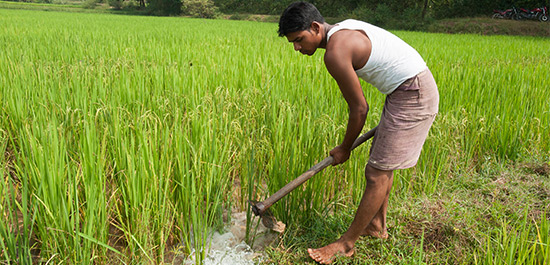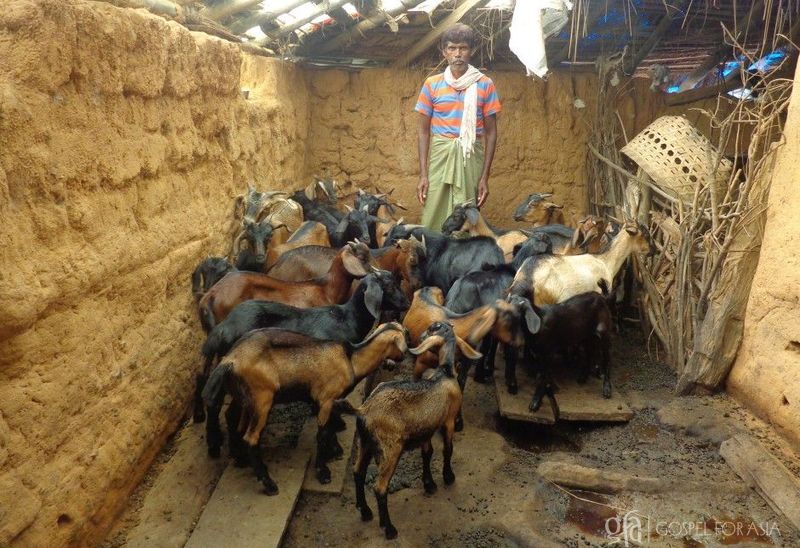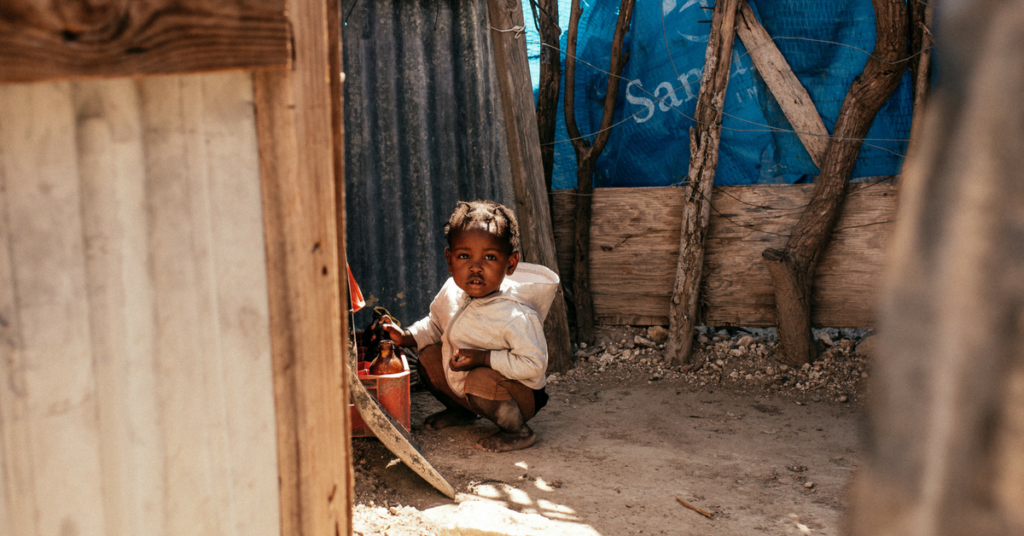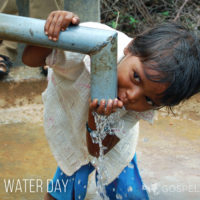The Church tries to build healthy communities in impoverished areas, often times through hand-outs or one time gifts that do not help families out of poverty. By providing work opportunities, the Church can build communities and help eradicate poverty. Faith-based organizations (FBOs) are most often supported by the Church and its congregants in such a way that these FBOs operate as an arm of the church.
So what is the Church’s role in helping to eradicate poverty? What are the various methods used and what are the measures taken for poverty eradication around the world?
The Efforts of the Church to Eradicate Poverty
Often times, churches will turn to short-term solutions, such as soup kitchens, in order to build healthy communities and help improve an individual’s life. Yet, despite the wonderful intentions and loving staff, these often do not come with the intended results. Short-term solutions can lead to a deeper cycle of poverty and now those receiving the products are more materially dependent on outsiders
. When it comes to alleviating poverty, here’s how your Church can avoid helping that hurts explains Kristine Zambito, “When we try to help the poor, we try to make them more like us – materially rich. But giving hand-outs can be a dangerous and vicious cycle, increasing the pride of the giver and the shame of the recipient, without ever addressing the roots of poverty.”[1] We need to teach people in communities how to work or help them find work. In this way, the church can help build healthy, thriving communities that are not reliant on the donors or the givers.

Methods to Help Eradicate Poverty
In a recent article by Gospel for Asia, the author notes a report by the Who Health Organization and Geneva Global[5] that highlights the impact faith-based organizations (FBOs) are having on global poverty and how these nonprofits and organizations are helping the poverty rate decline around the world.
One of the great news notices a majority of people have missed is that the U.S. Agency for International Development (USAID) announced in March 2016 that in the last 30 years, extreme poverty around the world has been reduced by half. This information was based on a United Nations assessment following its goal-setting at the dawn of the new millennium: to eradicate poverty by 2030.
Perhaps one of the scandals plaguing nonprofits and churches that deeply impact the poverty rate is the lack of recognition of their efforts. Gospel for Asia’s legitimate efforts as a charity to serve impoverished communities has hardly been reported on or shared.
Christmas Gift Catalogs Help Provide Work for Families in Poverty
Gifts given through Gospel for Asia’s Christmas Gift Catalog, provide a legitimate way for families to produce an income and for healthy communities to be built. The first step in determining who needs Christmas gifts is a community development survey, where the Pastor go around and ask community members what would help them the most. Then through prayer and planning, pastors and other staff determine what the greatest needs of people in the community are.[2] This helps Gospel for Asia (GFA)-supported missionaries and pastors to build healthy communities. After the Gospel for Asia (GFA)-supported pastors determine the needs of the community, gifts are given out. In one such community, 37 goats were given out to people in order to provide an income to help build the healthy community.[3] Churches around the world should follow the example of Gospel for Asia-supported pastors in Asia and other non-profits, by looking for the long-term needs of the communities. Phil Smith writes, “Believing that local churches are uniquely poised to help people find meaningful employment in their communities, Jobs for Life equips churches to develop mentoring relationships and provide job training to those in need of work.”[4] If the Church around the world treated the poor in this way, then our world would be different.

Other faith-based nonprofits such as Samaritan’s Purse, Hope International and World Vision provide ways for donors to contribute toward poverty eradication in other countries outside of the U.S. One of the elements that makes these gift catalogs so effective and important is the staff who serve in the foreign nations that receive the gifts. The staff has the ability to understand the needs of the local population and then help direct the giving toward those individuals and families in a way that meets the needs of the most poor. Gifts like goats or a water buffalo can help a family provide a second income so kids can go back to school instead of going to work. Fathers have received gifts as small as blankets to keep them and their family warm during the cold months of the year and mothers have received sewing machines along with training of how to use them in order that they might gain an income by selling the garments they make. To know and understand what each family needs, someone local must be in communication with the gift recipients. This knowledge is exactly what is made possible by initiatives like gift catalogs and gift distributions.
The provision of income-producing items is what helps families escape poverty or avoid poverty altogether and the gift catalogs created by faith-based nonprofits enables much of this.
Operation Christmas Child, run by Samaritan’s Purse is another way for children in impoverished countries to receive gifts and celebrate Christmas.
Microfinance and Micro Loans Help Families Escape Poverty
Kiva, a microfinance organization, and one of the more well known micro-lending organizations helps define microfinance as, “a general term to describe financial services, such as loans, savings, insurance and fund transfers to entrepreneurs, small businesses and individuals who lack access to traditional banking services.” These lending institutions are not only for countries outside of the U.S., but there are a number of organizations within the United States that lend to people and businesses within the country. NerdWallet has list of the top 13 U.S. nonprofit lenders on their site.
Given the U.S. population that lives at or below the poverty line, U.S. lending institutions are not the organizations to be focused on here. Organizations like KIVA, Hope International, FINCA and others provide this financial service to individuals in extreme poverty and often in countries in Asia, Africa and South America.
Hope International describes their method as, “share the hope of Christ as we provide biblically based training, savings services, and loans that restore dignity and break the cycle of poverty.” A beneficiary of the savings group created with the help of Hope International describes the impact it has had on this life. Read Diogene’s story.
At this point in time, it’s reported that merely 2.7% of faith-based nonprofits administer micro lending worldwide, in stark contrast to the other methods available for poverty eradication.
Conclusion
It is a good thing to do short-term projects that help the community temporarily. Yet, communities should be surveyed to look how each member can be helped which helps build the overall community. This time spent surveying and understanding the intricate needs of an impoverished community proves to be a valuable and essential part of knowing how to provide for the needs of that same community.
Eradicating poverty and the large task that is cannot be done quickly or rashly. Providing “easy” handouts that only meet a temporary need have shown to more harmful in the long-term than they are good in the short-term.
Just recently Gospel for Asia announced it’s commitment to help eradicate poverty. It is a hope that faith-based organizations supported by the church and those with great concern for families in poverty will continue to re-invest in programs and methods to see poverty come to an end around the world.
Editor’s Note: Article was originally published on December 23, 2016 but updated on December 22, 2017 with more information.
[1] Zambito, Kristine. “When It Comes to Alleviating Poverty, Here’s How Your Church Can Avoid Help that Hurts.” Institute for Faith, Work and Economics. https://tifwe.org/how-your-church-can-better-help-the-poor/
[2] “Community Development.” Gospel for Asia. http://www.gfa.org/ministries/community-development/
[3] “Christmas Gifts Warm Body and Heart.” Gospel for Asia. http://www.gfa.org/news/articles/christmas-gifts-warm-body-and-heart/
[4] Greer, Peter and Smith, Phil. Created to Flourish. Hope International: 2016.
[5] Building From Common Foundations – The World Health Organization and
Faith-Based Organizations in Primary Healthcare. http://apps.who.int/iris/bitstream/10665/43884/1/9789241596626_eng.pdf
[6] Mains, Karen. Gospel for Asia: Do FBOs Help Decrease the Levels of Poverty in Our World?
http://www.patheos.com/blogs/gospelforasia/2017/10/gospel-for-asia-fbos-help-decrease-levels-poverty/






One comment